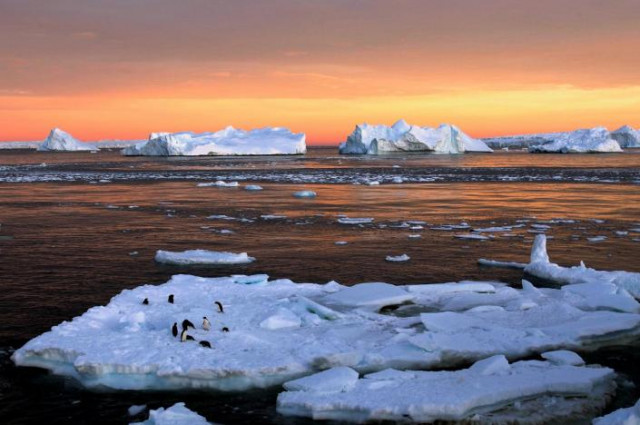
The shrinking ice that covers the Arctic Ocean clearly reflects how humans have affected climate.
In the past 30 years, the volume of ice has fallen by three quarters and the coverage by half. According to current trends, the Arctic Ocean will be ice-free by the summers of 2040.
An ice-free Arctic Ocean may even provoke celebrations for some people because of the shortcut for shipping between the Atlantic coasts of Europe and the Pacific coast of Asia and the Americas. Apart from this, it is highly probable that the Arctic Ocean harbours undiscovered supplies of oil and natural gas.
Arctic thaw quickening threatens trillion-dollar costs: report
Carbon dioxide and other atmospheric gases are causing the Earth to undergo global warming. These gases absorb heat in the form of sunlight, but block its radiation back into space. This traps heat in land, water and air. Higher carbon dioxide means more global warming. Some gases dampen warming down and some speed it up, such as the ones in the Arctic.
As the sea water is darker than ice, it absorbs more heat rather than reflecting it back into space. This melts more ice and leaves the sea water exposed which melts more ice. That is why the Arctic is warming faster than the rest of the planet. In 2015, the climate change deal made in Paris was meant to stop Earth’s temperature rising by more than two degrees above pre industrial levels.
The other reason that speeds up global warming is the frozen soil locking up a lot of organic material. If the permafrost melts, its organic contents can escape in the form of carbon dioxide or methane.
A warming Arctic can have rancorous effects. The world’s winds are driven by the temperature difference between the tropics and the poles. If the Arctic heats faster than the tropics, the wind speeds will clamp down and can result in blizzards and heat waves in unexpected places at unexpected times.
Global warming and other eco disasters
Ocean currents can slow down too. This slow circulation will tug at currents around the world with effects on everything from the Indian monsoon to the pattern of El Nino in the Pacific Ocean.
Something happening to the ice cap covering Greenland is a terrifying possibility as it contains about 10% of the world’s fresh water. If bits of it melt, sea levels could rise by a lot more.
The hard and bitter truth is that the Arctic as it is known today is certainly gone and its state shows that humans cannot undo climate change.
This article originally appeared on The Economist.


















COMMENTS
Comments are moderated and generally will be posted if they are on-topic and not abusive.
For more information, please see our Comments FAQ